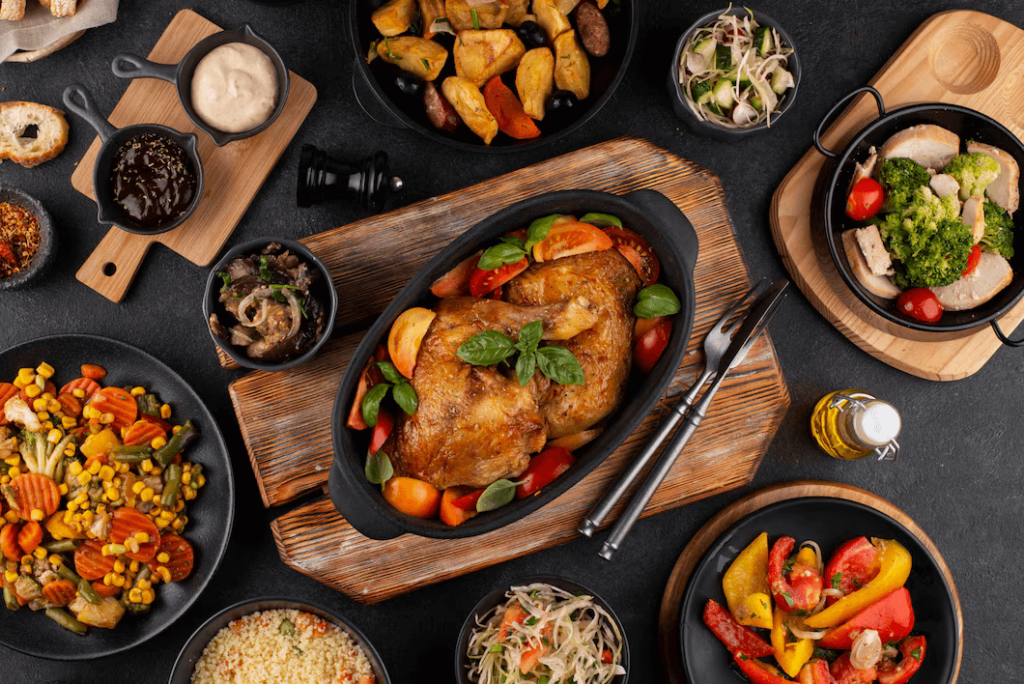
Introduction
Food photography has become an essential element in today’s digital age, especially with the rise of social media platforms like Instagram and Pinterest. Whether for restaurant menus, cookbooks, blogs, or personal portfolios, food photography is all about making food look appetizing and irresistible. This specialized genre of photography requires a unique blend of artistry and technical skill to capture the perfect shot that makes the viewer’s mouth water. In this article, we’ll explore key techniques, the latest trends, and expert tips to improve your food photography game.
Essential Food Photography Techniques
- Lighting
Lighting is one of the most important elements in food photography. Natural light, especially from a window, is ideal because it’s soft and evenly distributed. Avoid harsh overhead lighting or direct sunlight, as these can create unflattering shadows and highlights.- Tip: Side lighting works best for adding texture and dimension to food, while backlighting can enhance steam or translucency in certain dishes.
- Composition
Composition refers to how the elements in your photo are arranged. The “rule of thirds” is a popular guideline in food photography, where the subject is placed off-center to create a balanced and visually appealing shot.- Tip: Use props like utensils, napkins, and raw ingredients to create a story around the dish, but be careful not to overcrowd the frame.
- Focus and Depth of Field
Selective focus and a shallow depth of field can draw attention to the main subject (e.g., a perfectly cooked steak or a glossy dessert) while blurring out the background. This effect creates a professional look that emphasizes the texture and details of the food.- Tip: Use a wide aperture (low f-stop) to achieve a shallow depth of field for focusing on specific details.
- Color and Contrast
Food photography is often about capturing vibrant colors and contrasts. Brightly colored dishes like salads or fruit bowls tend to pop on camera.- Tip: Play with contrasting colors between the food and the background or props. For example, a red dish on a neutral white or black plate can create a striking image.
- Angles
Choosing the right angle is crucial in food photography. Some dishes look better when shot from above (flat lays), while others, like burgers or layered cakes, benefit from a side or 45-degree angle to highlight their structure.- Tip: Experiment with different angles to see what works best for each dish, but avoid shooting too high or too low unless it serves a creative purpose.
- Editing and Post-Processing
Post-processing is essential to make food images look polished and professional. Adjustments in brightness, contrast, saturation, and sharpness can enhance the visual appeal.- Tip: Use editing software like Adobe Lightroom or Photoshop to make subtle corrections without over-editing. Maintaining the natural look of the food is important.
Trends in Food Photography
- Minimalist Aesthetic
Minimalism is a popular trend in food photography. It focuses on the dish itself without too many distractions. Clean, simple backgrounds and minimal props are key to this style. - Rustic and Organic Styling
Rustic food photography highlights natural, unpolished elements, like wood surfaces, raw ingredients, and imperfect textures. It gives the viewer a sense of authenticity and “farm-to-table” freshness. - Dark and Moody Photography
Unlike the traditional bright and airy food photography style, dark and moody photography uses rich, deep tones to create a more dramatic and sophisticated look. This trend is particularly popular with gourmet foods and beverages. - Action Shots
Capturing motion—such as pouring syrup, sprinkling herbs, or slicing through a dish—has become a growing trend in food photography. These action shots add dynamism and bring life to the stillness of a food scene. - Top-Down Flat Lay Photography
Flat lays, where the food is shot directly from above, remain highly popular for Instagram and recipe blogs. This trend works especially well for dishes with multiple elements, such as charcuterie boards or breakfast spreads.
Tips for Improving Your Food Photography
- Use a Tripod
A tripod ensures stability and helps prevent camera shake, especially when shooting in low light or at slower shutter speeds. It also allows for more precise composition and framing. - Shoot in RAW Format
Shooting in RAW format gives you more flexibility in post-processing, as it retains all the image data. This makes it easier to correct exposure or color balance issues without losing quality. - Practice Plating and Styling
Good plating can make or break a food photo. Practice arranging the food on the plate to ensure that it looks as appetizing as possible. Don’t be afraid to rearrange the food or use tweezers for precision placement. - Work Quickly
Food doesn’t always stay photogenic for long, especially hot dishes or foods that wilt or melt. Be prepared to shoot quickly, especially if you want to capture the dish at its freshest. - Incorporate Textures
Adding texture to your photos—whether it’s from the food itself or surrounding props—can make your shots more interesting. Think about the contrast between crispy, soft, or glossy textures to add depth and intrigue. - Shoot Multiple Variations
Don’t limit yourself to one angle or composition. Shoot from various perspectives and experiment with lighting to give yourself multiple options when editing.
Conclusion
Food photography is both an art and a technical skill, requiring attention to detail and a keen eye for composition, lighting, and texture. By mastering the basic techniques and staying up to date with current trends, you can create stunning food images that not only entice viewers but also tell a visual story. Whether you’re a budding food blogger, a professional photographer, or a restaurant owner, honing your food photography skills can help you capture mouthwatering images that leave a lasting impression.